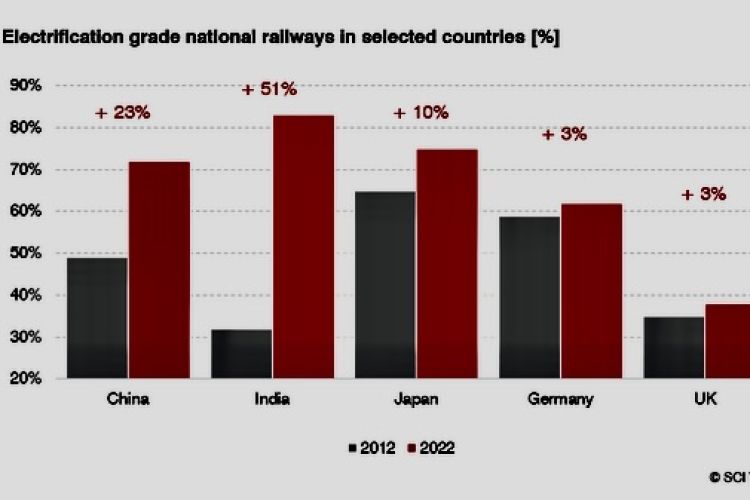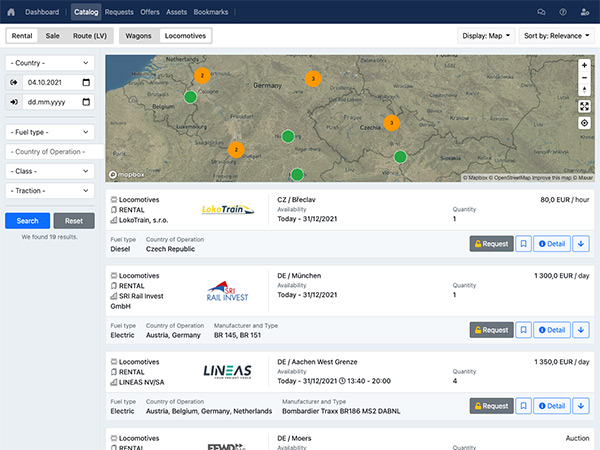Electrification: forecast
Over the past decade, China and India have electrified an average of 1,000 kilometres of existing rail network per year - Germany and the UK have managed significantly less than 100 kilometres per year over the same period. Despite repeated government commitments, too little is being done in Europe. As a result of underinvestment and a corresponding backlog, SCI Verkehr forecasts strong growth in rail electrification in Europe between now and 2027, from today's low levels. In Asia, however, only moderate growth is expected from the current high level. Major railway countries, especially China and India, have built many new electrified lines and made massive investments in the electrification of existing railways. The global market volume is relatively low, currently around ten billion euros (2021-2023 average). Nevertheless, the construction of new railway lines and the electrification of existing lines in Asia and Europe are driving the global market volume.
Electrification: Asia
With many new electrified lines being built and huge investments being made in the electrification of existing railways, Asia is leading the way. However, growth is expected to be slightly above inflation, even though India is investing heavily in rail electrification. This is due to a decline in new high-speed and metro projects in China.
Electrification: Europe
Despite many government commitments, very little has happened in Europe. While the average electrification rate in Europe is only 50 per cent, major railway countries in Asia have electrification rates of more than 70 per cent. High costs and lengthy planning and approval processes are holding back the expansion and upgrading of networks in Europe. Many countries, notably Germany and the UK, will not come close to meeting their official emissions targets if things continue at the same pace as in recent years.
Electrification: benefits
Railway electrification is a niche market within the railway infrastructure sector. However, it is a growing market with a positive long-term outlook. Apart from its positive impact on the climate, the electrification of existing rail networks increases efficiency. It makes it possible to optimise capacity utilisation by increasing speeds and axle loads. The harmonisation of international and national rail freight corridors in conjunction with electrification makes it possible to use standard fleets. Another major benefit is the improved resilience of the entire rail network. However, electrification is expensive, especially for existing rail networks, if it means disrupting traffic. Nevertheless, there is increasing pressure to electrify rail lines because it is a more attractive mode of transport when there is sufficient rail traffic, the SCI Verkehr study concludes.

